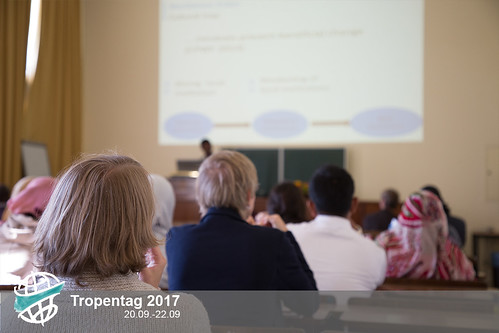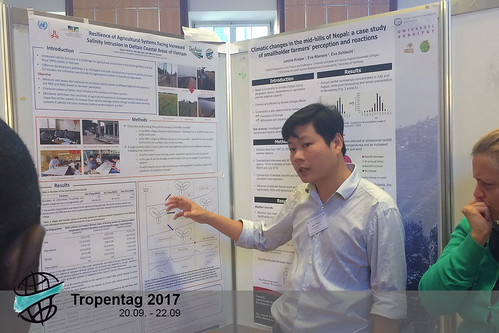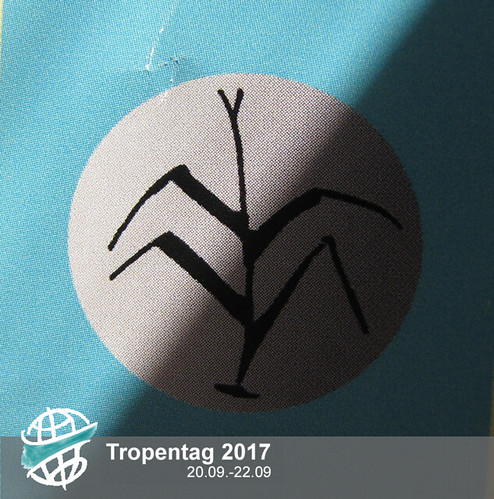Tropentag 2017
Dinner is Served...the Desert Locust!
Thu, 09/21/2017 - 18:06 — lizkusiaPhillip Straub, a first-time participant at Tropentag has developed a diet for the desert locust. The outstanding young German researcher submitted an abstract from his Bachelor’s degree thesis. He was overwhelmed after hearing he was selected for an oral presentation. To say the least, he was very excited. Philip is convinced that insects for food is the next big thing. “There are new developments every day, it is exciting,” he said. Philip won a GIZ scholarship to carry out his research project at the International Centre of Insect Physiology and Ecology (ICIPE), Kenya.
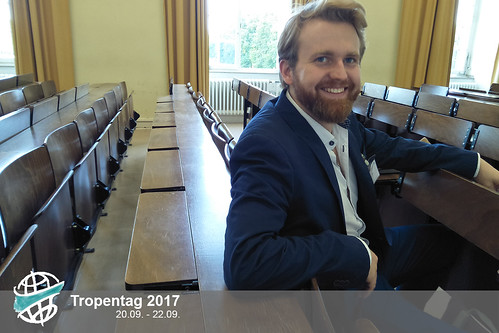
He sought to develop a storable diet for the desert locust that could be used for mass rearing. The desert locust is consumed by humans and can also be used as an animal feed supplement. He tested five different formulations for human food. They mainly consisted of powdered cowpea, cornmeal, soy bean and carrots in different ratios. Some were enriched with multivitamins. Two diets worked well. “My findings are a starting point for optimizing diets with a longer shelf-life for insects,” he explains.
The Ice is Melting! Perceptions of Climate Change in Peru
Thu, 09/21/2017 - 18:01 — giulia.rotanodari71% of tropical glaciers in South America are found in Peru and the ongoing increase in the average global temperature is causing their retreat in many areas, threatening livelihoods.
Yaremi Karina Cruz Rivera, from Cologne University of Applied Sciences, analyzed the perceptions of climate change of four communities living in the surrounding area of the Chicon glacier, one of the highest tropical glaciers in Peru, and the source of water for the Chicon Watershed. The four communities make use of the water in this area for human consumption and agriculture.
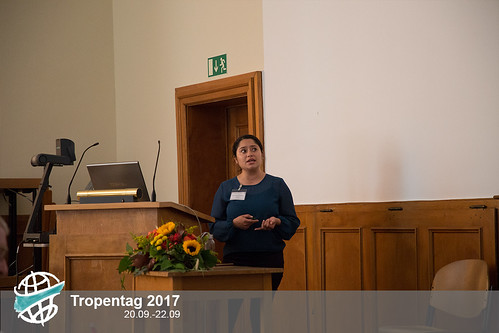
The aim of the investigation was to assess the awareness of the communities, in particular of women, of the hazards linked to climate change. Results showed that people perceive that temperatures are increased and extreme climactic events such as droughts, floods and frosts have occurred frequently in the last decade, but drought is the most imminent challenge.
The four communities demonstrated an awareness of the threat of climactic change to agriculture and their livelihoods, leading to an interest in implementing activities and ecological approaches, such as afforestation in the watershed together with the local government.
Is there an I in 'Science?'
Thu, 09/21/2017 - 18:00 — megreslerBy sharing her narrative as a young girl who questioned why some crop fields were peppered with trees while others were not, Lin Bautze from the Research Institute of Organic Agriculture in Germany unintentionally posed an important question to the audience of Oral Presentation III "Production Methods" on Thursday afternoon. Should research stand by itself, without acknowledging the role of the researcher? Or does the lived experience of a researcher, like Bautze, and the ways it shaped the trajectory of her research, create a new space for the audience to explore the research?
This is certainly a controversial discussion between qualitative researchers, whose position on the research paradigm may vary. Quasi-foundationalists, like myself, would acknowledge a unique lens through which individual researchers analyze and interpret their data. Assuming their analysis is conducted with purposeful reflexivity and self-awareness, I believe that research in #FutureAgriculture has something foundational to gain from the person/s involved in gathering, sorting, analyzing and interpreting their data. From this perspective, I argue we are better equipped as researchers when we allow our intersectionalites to contribute to robust analyses of our data.
This is what Bautze has done in her exploration of alley cropping as an adaptation strategy for a future changing climate in Africa. This should also be the direction #FutureAgriculture research continues moving forward in.

Attention: Bring your research closer to farmers!
Thu, 09/21/2017 - 17:01 — Hana KhanhIn order to increase the productivity of potatoes in Rwanda, researchers created new certified seeds (formal system) to replace the commonly used, low quality and low yielding seeds (informal system). However, unfortunately, Leone Ferrari and her team found that certified seeds are still underutilized.
While conducting her research on four of the most productive districts in Rwanda for potatoes, Leone Ferrari realized that farmers using certified seeds represented only around 5% of the national required demand. Producing certified seeds in Rwanda is necessary, but is still not enough.
She insisted that the formal and informal systems of potato seeds in Rwanda must be complementary and mutually dependent. She recommended developing strong linkages with farmers to distribute certified seeds.
In the end, it comes back to the fundamentals, a close relationship with and awareness of farmers. Hopefully, her research add urgency to the need for experts, researchers, policy makers to put more effort in bringing their research and work closer to the farmers.
Young Scientists Work to Make a Healthier Soil
Thu, 09/21/2017 - 14:38 — mustamin.fadliAt the first oral presentation on soil and soil fertility today there were five young scientist presenting their work. I found two very interesting. Steffen Werner from the University of Bochum tried to answer if urban agriculture can contribute to food security by reducing nutrient losses. His two years work in Ghana used biochar and water irrigation to reduce nutrient losses. Urban and peri-urban agriculture is characterized by higher input and soil degradation. Excessive use of mineral fertilizer can lead to losses of nutrient through leaching.
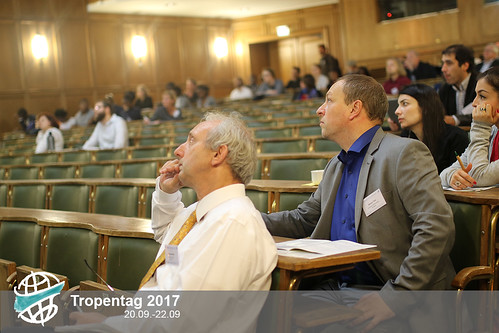
However, his results still showed increased nutrient leaching, especially of N, P, Ca, Mg, and Na. He suggested more appropriate irrigation, because that proved effective in lowering leaching .
Irabella Thiemann from the University of Bonn tried to find out if flow paths in maize-paddy rice cropping system can be a hotspot for nutrient cycling. Maize-paddy rice cropping systems consume less water during the dry season. Changing systems from maize to rice led to desiccation cracks in the soil. Her research studied the role of this crack, where anaerobic conditions lead to methane emissions.

Diverse Approaches to Understanding Farmers’ Perception
Thu, 09/21/2017 - 14:19 — Hana KhanhStarting very early in the morning of the second day of Tropentag 2017, the poster sessions on Risk and Awareness still attracted many people. It is good news that this year many presented research focused on understanding the farmers’ perception through different approaches. It also made the session more interesting with lots of discussions.
While Akary Min investigated how farmers adapt to climate change in the Central Dry Zone of Myanmar, Amie Heri-Kazi Bisimwa from Eastern of DR Congo was more inclined towards the farmers’ perceptions of land degradation in South Kivu. And Minh Tu Nguyen has been currently working on the subjective measurement of resilience of agricultural systems to increased salinity intrusion in Vietnam. More surprisingly, Emily Mutota tried to apply a new method, ‘’photovoice’’, in which she attempted to understand the perception of the local community about their own habitats by asking them to expressing it through the photos they captured. Even though, personally, I was not able to find many promising results from this research, her attempts with a new approach should be appreciated.

Better in the Ground than in the Freezer
Thu, 09/21/2017 - 14:13 — marlemkeWhile Global Crop Diversity Trust, as pointed out by Elena Popova in her oral presentation, accumulates more than 757, 000 seeds in their “Nordic gene bank” (NordGen) in Norway, a US$ 9 million project, smallholder farmers from all over the world simply cultivate grow theirs in the form of landraces to sustain themselves.
I believe we have to critically evaluate this development. On one hand, it’s good to have this reservoir of different crop plants and more than 80.000 seeds are distributed to farmers in 157 countries in the global South from the seed banks. On the other hand, resistance traits related to climate change such as drought tolerance and water logging don’t develop over night – and still less in a seed bank, possibly decades being stored there.
We need more biodiversity, but in the fields, not in the refrigerator.
Where Does the Water Go?
Thu, 09/21/2017 - 13:25 — kristianj71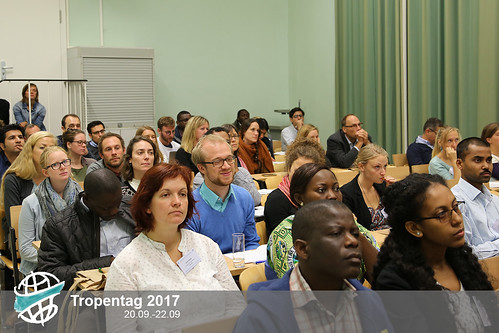
You have to throw caution to the wind when you walk into the oral or poster sessions. You never know what you are going to get.
The "Water and Irrigation" oral presentations ranged from brave, young newcomers exposing their masters’ theses to the world, to veterans summarizing already published work. Here, as in most disciplines this conference, modeling has assumed a large role. After the session, I grabbed Dr. Giese from the University of Hohenheim, who pointed out though that, while part of the future of agricultural science, there were significant constraints due to limited available data. After all, without any connection to the real world, models have little relevance.





